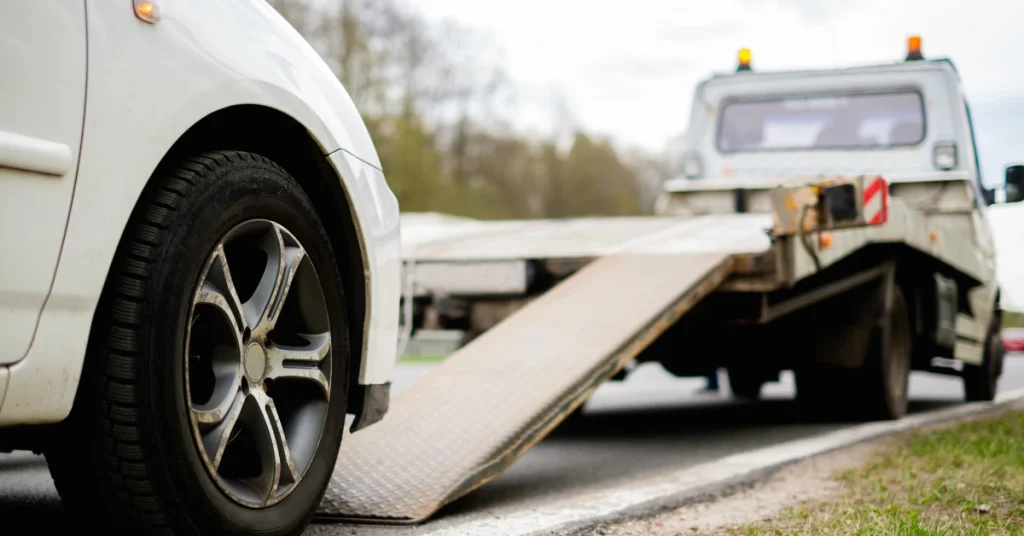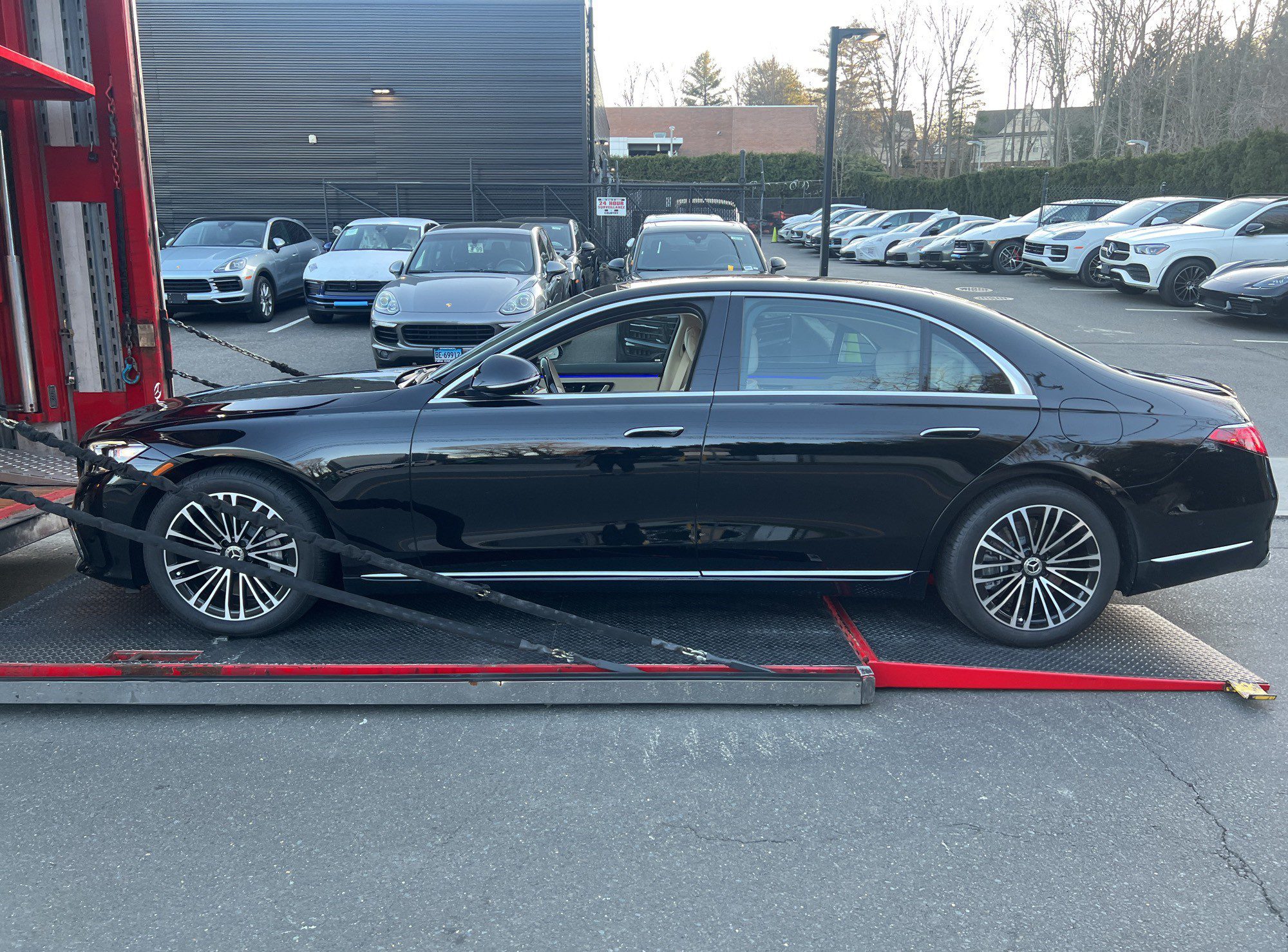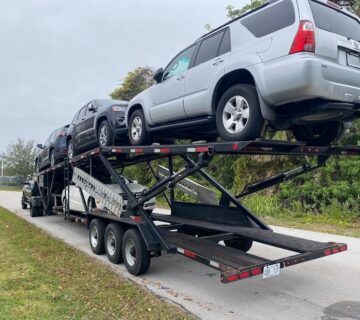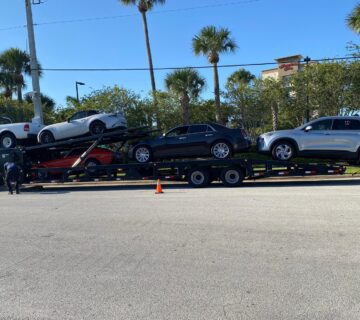
Preparing Your Vehicle for Transport: Expert Tips and Free Quote Options with Mission Auto Transport
Estimated reading time: 15 minutes
Key Takeaways
-
- Proper vehicle preparation is essential for ensuring a smooth and damage-free transport experience
-
- A comprehensive cleaning both inside and out allows for accurate pre-transport condition documentation
-
- Maintenance checks including fluid levels, battery charge, and tire pressure are crucial before shipping
-
- Personal items must be removed as per Department of Transportation regulations
-
- Mission Auto Transport offers specialized services including enclosed transport for high-value vehicles
-
- Thorough photo documentation before transport protects both the customer and carrier
- Free, no-obligation quotes are available through Mission Auto Transport’s website
Table of Contents
Preparing your vehicle for transport is an essential step that cannot be overlooked when planning for long-distance shipping. Whether you’re relocating across the country, sending a vehicle to a buyer, or transporting a classic car to a show, proper preparation ensures your vehicle arrives at its destination in the same condition it left. Mission Auto Transport, a leading provider in the vehicle shipping industry, specializes in safe and reliable long-distance shipping services that thousands of customers trust every year. This comprehensive guide walks you through every step of the preparation process and explains how you can easily secure a free quote for your vehicle transport needs.
Why Vehicle Preparation Matters
The meticulous preparation of your vehicle before transport plays a crucial role in ensuring a smooth and damage-free shipping experience. Vehicle prep isn’t just about cleanliness – it’s a comprehensive approach to safeguarding your investment throughout its journey.
Properly preparing your automobile helps prevent common transit issues such as scratches, dents, and damage to loose components that might occur during loading, transit, or unloading. Additionally, thorough vehicle preparation significantly reduces the likelihood of transportation delays. According to shipping experts, inadequate preparation is one of the leading causes of disputes between vehicle owners and transport companies. Proper documentation of your vehicle’s condition before shipping can help avoid disagreements about pre-existing damage versus transport-related damage.
Mission Auto Transport places exceptional emphasis on safety protocols and customer satisfaction in their long-distance shipping services. Their decades of experience have shown that well-prepared vehicles consistently have smoother transport experiences with fewer complications. By taking the time to properly ready your vehicle for transport, you’re actively participating in ensuring its safe delivery to the destination.
Detailed Preparation Checklist
A comprehensive approach to vehicle prep will ensure your automobile is fully ready for long-distance shipping. Mission Auto Transport recommends following this detailed checklist to prepare your vehicle properly:
Clean Your Vehicle
Thoroughly washing your vehicle isn’t just about aesthetics – it serves a vital purpose in the preparation process. A clean exterior allows for proper inspection and accurate documentation of your vehicle’s pre-transport condition. Wash both the exterior and interior of your vehicle meticulously to expose any existing scratches, dents, or damage that might otherwise be hidden under dirt or grime.
The cleaning process also helps transport professionals conduct more accurate inspections at pickup and delivery points. Pay special attention to areas that tend to collect dirt, such as wheel wells and undercarriage components. A clean vehicle provides the clearest possible baseline for condition reporting, which protects both you and the transport company during the shipping process.
Maintenance Check
Conducting a comprehensive maintenance check ensures your vehicle is in optimal condition for transport. Start by checking for and repairing any fluid leaks, as these can potentially damage other vehicles during transport and may even lead to your shipment being refused. Verify that your tires are properly inflated to the manufacturer’s recommended pressure levels, which helps prevent shifting during transit.
Ensure your battery is fully charged and securely fastened, as a dead battery can significantly complicate the loading and unloading process. Check all fluid levels including oil, transmission fluid, brake fluid, and coolant to ensure they’re at appropriate levels. If your vehicle has any mechanical issues that might affect its ability to roll, brake, or steer, address these problems before transport. Vehicles that cannot roll freely may require special equipment and handling, potentially leading to additional charges.
Remove Personal Items
The removal of personal belongings from your vehicle is not just a recommendation but a requirement enforced by Department of Transportation regulations. Auto transport carriers are not licensed to transport household goods or personal effects, and their insurance typically doesn’t cover items left in vehicles.
Personal items inside the vehicle can shift during transport, potentially causing damage to the interior. Additionally, the added weight of personal belongings increases the overall weight of the shipment, which can affect fuel efficiency and, in some cases, lead to additional charges. The only items that should remain in your vehicle are those that came with it from the manufacturer.
There are limited exceptions for certain built-in components or factory accessories, but as a general rule, remove everything that isn’t permanently attached to your vehicle. This includes electronics, clothing, documents, sunglasses, and any aftermarket accessories that can be easily detached.
Secure Loose Parts
Any external accessories or components that are not permanently affixed to your vehicle should be removed or securely fastened before transport. This includes removable antennas, which should be fully retracted or detached to prevent breakage. Custom spoilers, especially those that are aftermarket additions, may need to be temporarily removed depending on their size and mounting security.
Roof racks, bike racks, and luggage carriers should also be removed, as they can catch wind during transit and potentially sustain damage or cause aerodynamic issues for the transport carrier. If your vehicle has convertible tops, ensure they are properly secured to prevent wind damage. Side mirrors that fold should be folded in, and any detachable exterior decorations should be removed to prevent loss during transit.
For components that cannot be removed, consider using temporary protective coverings such as padded tape or bubble wrap to prevent damage during shipping. Remember to inform your auto transport provider about any non-removable modifications or special features your vehicle may have so they can take appropriate precautions during handling.
Fuel Level Check
Before transporting your vehicle, it’s important to manage the fuel level appropriately. Transport experts recommend maintaining your gas tank at approximately one-quarter full—no more, no less. This level provides the perfect balance: enough fuel to allow for loading and unloading procedures, but not so much that it adds unnecessary weight to the vehicle.
Excess weight from a full tank increases fuel consumption for the carrier, potentially raising transportation costs. Additionally, a fuller tank represents a larger volume of flammable material, which presents an increased safety risk, however minimal. The one-quarter tank guideline also ensures that your vehicle has sufficient fuel for short drives after delivery, eliminating the immediate need to find a gas station.
For electric vehicles, similar principles apply—aim for about 20-25% battery charge. This provides enough power for necessary operations without the additional weight of a full battery charge. Always communicate with your carrier about any special fueling requirements your vehicle may have, especially for rare or exotic automobiles with specialized fuel systems.
Document Condition
Creating thorough documentation of your vehicle’s condition before shipping is perhaps one of the most crucial steps in the preparation process. This documentation serves as your evidence of the vehicle’s pre-transport state and proves invaluable in the unlikely event of disputes about damage.
Start by taking high-resolution photographs of your vehicle from multiple angles, ensuring you capture all sides, the top, and even underneath if possible. Pay special attention to documenting any existing damage, no matter how minor, such as scratches, dents, paint chips, or interior wear. These images should be date-stamped if possible.
In addition to photographs, create a detailed written record noting any existing damage, special features, or concerns. Include the current mileage reading and the general mechanical condition of the vehicle. Make copies of this documentation and share it with the transport company while keeping the originals for your records.
Many professional carriers will also conduct their own inspection and provide a condition report at pick-up. Take time to review this report carefully, ensuring it accurately reflects your vehicle’s condition, and don’t hesitate to point out any discrepancies before signing off on the paperwork.
Choosing Mission Auto Transport for Long-Distance Shipping
When it comes to entrusting your vehicle to a transport company, reputation and reliability are paramount factors to consider. Mission Auto Transport has established itself as an industry leader in long-distance shipping, earning the trust of thousands of customers through consistent, high-quality service delivery.
The company’s long-distance shipping expertise is backed by years of experience handling routes across the continental United States. Their team of professionals understands the unique challenges that come with transporting vehicles over substantial distances and has developed protocols specifically designed to address these challenges. Mission Auto Transport’s punctuality record speaks for itself, with an impressive on-time delivery rate that significantly exceeds industry averages.
What truly sets Mission Auto Transport apart in the competitive auto shipping industry is their transparent approach to customer service. Unlike many competitors, they provide clear, upfront pricing without hidden fees or last-minute surcharges. Their secure vehicle handling procedures ensure your automobile remains protected throughout transit, using state-of-the-art equipment and carefully vetted drivers.
The company offers comprehensive insurance coverage as standard with all shipments, providing additional peace of mind that your vehicle is financially protected during transport. Their dedicated customer service team remains accessible throughout the shipping process, providing regular updates and addressing any questions or concerns promptly.
Mission Auto Transport’s customer satisfaction guarantees demonstrate their confidence in their service quality and their commitment to resolving any issues should they arise. Their track record of positive customer reviews and testimonials across multiple platforms further validates their position as a trusted partner for vehicle shipping needs.
How to Get a Free Quote
Obtaining a free quote from Mission Auto Transport has been streamlined to provide maximum convenience while still delivering accurate pricing information. Their no-obligation quote system allows you to explore your shipping options without any commitment.
The process begins by visiting Mission Auto Transport’s dedicated quote page. You’ll need to provide basic information about your vehicle, including the make, model, and year. The system will then ask for details about your shipping requirements, including the pickup and delivery locations, your desired timeframe, and any special considerations such as modified vehicles or inoperable cars.
Once you’ve submitted this information, Mission Auto Transport’s sophisticated pricing algorithm generates a competitive quote based on current market conditions, fuel prices, distance, vehicle specifications, and service level. What makes their quote system particularly valuable is its transparency—the price you receive includes all standard services without hidden fees or surcharges.
For those with more complex shipping needs or questions about the quote, Mission Auto Transport’s customer service representatives are readily available to provide clarification and explore customized solutions. Many customers appreciate that they can receive their quote instantly online but still have access to human assistance when needed.
The free quotes provided are valid for a specified period, giving you time to consider your options without pressure. Mission Auto Transport prides itself on competitive pricing while maintaining high service standards, ensuring you receive excellent value for your investment.
Begin your vehicle shipping journey today by requesting your no-obligation free quote from Mission Auto Transport’s easy-to-use online system.
Specialized Preparation for Different Vehicle Types
Classic and Luxury Vehicles
Preparing high-value automobiles for transport requires additional considerations to protect their unique features and maintain their value. Mission Auto Transport recommends:
-
- Disconnecting the car alarm system to prevent battery drainage and false alarms during transit
-
- Applying protective film to delicate paint finishes, especially for rare or custom colors
-
- Removing or securing any period-correct or valuable accessories that might detach during transport
- Documenting any special starting procedures or handling requirements for the carrier
Luxury vehicle owners should consider enclosed transport options for maximum protection from road debris and weather elements. Mission Auto Transport offers premium enclosed shipping services specifically designed for high-value automobiles, providing an extra layer of security and discretion during transit.
Modified or Custom Vehicles
Vehicles with aftermarket modifications or custom features require special attention during the preparation process:
-
- Lowered vehicles may need extra clearance considerations for loading and unloading
-
- Vehicles with wide body kits or extended components might require specialized equipment
-
- Custom paint jobs or wraps should be thoroughly documented with detailed photos
- Aftermarket performance parts may need additional securing or protection
Be sure to communicate all modifications clearly when requesting your free quote, as these details can impact handling requirements and potentially affect pricing. Mission Auto Transport’s experienced team can provide guidance on preparing even the most heavily customized vehicles for safe transport.
Electric Vehicles
Electric vehicles (EVs) have specific preparation requirements that differ from traditional combustion engine vehicles:
-
- Charge the battery to approximately 20-25%—not full—to minimize weight while providing sufficient power for loading/unloading
-
- Disable any self-driving or automated features that might activate during transport
-
- Remove charging cables and adapters, which should be transported separately
- Document the location of emergency cut-off switches or special handling procedures
Mission Auto Transport’s carriers are trained in the proper handling of electric vehicles, understanding their unique weight distribution and technical requirements. Their expertise ensures your EV arrives safely without compromising its sophisticated systems.
Seasonal Considerations for Vehicle Transport
Winter Transport Preparation
Preparing your vehicle for winter transport requires additional steps to ensure safety during cold weather conditions:
-
- Check antifreeze levels to prevent fluid freezing
-
- Consider using a winter-grade battery if shipping to or from extremely cold regions
-
- Apply a protective wax coating to shield paint from road salt and winter chemicals
- Ensure windshield wiper fluid is rated for low temperatures
Mission Auto Transport’s carriers are experienced with winter driving conditions and take extra precautions during cold weather months. Their expertise in handling vehicles on snow and ice ensures your automobile reaches its destination safely despite challenging conditions.
Summer Transport Preparation
Hot weather presents its own set of challenges for vehicle shipping:
-
- Check cooling system functionality and fluid levels
-
- Consider removing or protecting heat-sensitive items
-
- Apply UV protectant to interior surfaces to prevent sun damage during loading/unloading
- Ensure tire pressure is correct, as heat can cause over-inflation
During summer months, Mission Auto Transport schedules pickups and deliveries to avoid the hottest parts of the day when possible, minimizing the time your vehicle spends exposed to extreme temperatures during loading and unloading procedures.
After Delivery: Post-Transport Vehicle Inspection
When your vehicle arrives at its destination, conducting a thorough inspection is critical:
-
- Walk around the entire vehicle with the driver, comparing its condition to your pre-transport documentation
-
- Check all exterior surfaces in good lighting, looking for any new damage
-
- Test all operational components, including lights, windows, and electronics
-
- Examine undercarriage areas if accessible
- Note any concerns on the delivery receipt before signing
Mission Auto Transport stands behind their service quality, providing a straightforward process for addressing the rare instances where issues might arise. Their responsive customer service team is available to help resolve any concerns promptly and professionally, ensuring your complete satisfaction with the shipping experience.
Conclusion: Peace of Mind with Proper Preparation
Proper vehicle prep is not just a suggestion—it’s an essential step that protects your investment and ensures a smooth transport experience. By following the comprehensive guidelines outlined in this article, you can significantly reduce the risk of complications during shipping and enjoy greater peace of mind throughout the process.
Mission Auto Transport’s commitment to excellence in long-distance shipping makes them an ideal partner for your vehicle transportation needs. Their experienced team understands the importance of proper preparation and works diligently to deliver your vehicle safely and on time, regardless of distance or destination.
Take the first step toward a worry-free vehicle shipping experience today by requesting your free quote from Mission Auto Transport. Their user-friendly online quote system makes it easy to get started, with no obligation and transparent pricing. Whether you’re shipping a family sedan across state lines or transporting a luxury vehicle across the country, Mission Auto Transport provides the expertise, care, and reliability you deserve.
Visit https://missionautotransport.com/get-your-quote/ now to receive your personalized vehicle shipping estimate and experience the Mission Auto Transport difference for yourself.
Frequently Asked Questions
How far in advance should I book my vehicle transport?
Ideally, you should book your transport 2-4 weeks before your desired pickup date. During peak seasons (summer months and January), consider booking even earlier. For last-minute shipments, Mission Auto Transport offers expedited services, though these may come at a premium rate.
Is my vehicle fully insured during transport?
Yes, Mission Auto Transport provides comprehensive insurance coverage for all vehicles during transit. Their carriers maintain cargo insurance that protects your vehicle against damage that might occur during the shipping process. Before transport, you’ll receive documentation outlining the coverage details.
What if my vehicle is inoperable?
Mission Auto Transport can accommodate non-running vehicles, though this requires special equipment for loading and unloading. Be sure to mention that your vehicle is inoperable when requesting your quote, as this will affect pricing and logistics. The carrier will need to know if the vehicle can roll, brake, and steer, even if the engine doesn’t start.
How long does vehicle shipping typically take?
Transit times vary depending on distance, route, and season. As a general guideline, shipments under 500 miles typically take 1-3 days, while cross-country transports (1,500+ miles) may take 7-10 days. Mission Auto Transport provides estimated delivery timeframes when you book and offers tracking updates throughout the process.
Can I pack personal items in my vehicle during transport?
The Department of Transportation regulations prohibit auto transport carriers from transporting personal belongings in vehicles. Additionally, items inside the vehicle are not covered by carrier insurance and could shift during transit, potentially causing damage. It’s best to remove all personal items before transport.
What’s the difference between open and enclosed transport?
Open transport uses carriers that expose vehicles to the elements but is more economical and widely available. Enclosed transport utilizes fully covered trailers that protect vehicles from weather and road debris, offering enhanced security and protection. Enclosed shipping is recommended for high-value, classic, or luxury vehicles and typically costs 30-50% more than open transport.



